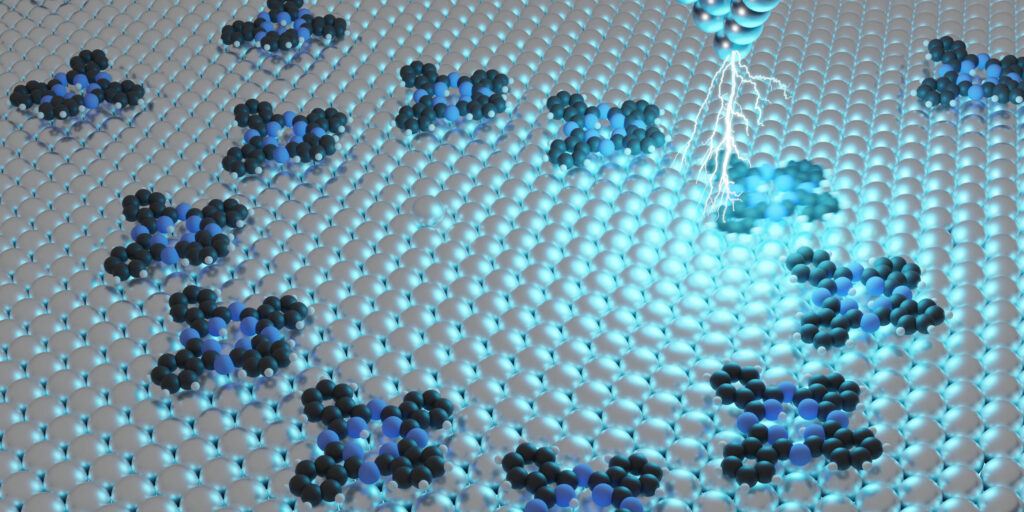The chemical composition of a material alone sometimes reveals little about its properties. The decisive factor is often the arrangement of the molecules in the atomic lattice structure or on the surface of the material. Materials science utilizes this factor to create certain properties by applying individual atoms and molecules to surfaces with the aid of high-performance microscopes. This is still extremely time-consuming and the constructed nanostructures are comparatively simple.
Using artificial intelligence, a research group at TU Graz now wants to take the construction of nanostructures to a new level. Their paper is published in the journal Computer Physics Communications.
“We want to develop a self-learning AI system that positions individual molecules quickly, specifically and in the right orientation, and all this completely autonomously,” says Oliver Hofmann from the Institute of Solid State Physics, who heads the research group. This should make it possible to build highly complex molecular structures, including logic circuits in the nanometer range.
Positioning using a scanning tunneling microscope
The positioning of individual molecules on a material’s surface is carried out using a scanning tunneling microscope. The tip of the probe emits an electrical impulse to deposit a molecule it is carrying.
“A person needs a few minutes to complete this step for a simple molecule,” says Hofmann. “But in order to build complicated structures with potentially exciting effects, many thousands of complex molecules have to be positioned individually and the result then tested. This of course takes a relatively long time.”

However, a scanning tunneling microscope can also be controlled by a computer. Hofmann’s team now wants to use various machine learning methods to get such a computer system to place the molecules in the correct position independently.
First, AI methods are used to calculate an optimal plan that describes the most efficient and reliable approach to building the structure. Self-learning AI algorithms then control the probe tip to place the molecules precisely according to the plan.
“Positioning complex molecules at the highest precision is a difficult process, as their alignment is always subject to a certain degree of chance despite the best possible control,” explains Hofmann. The researchers will integrate this conditional probability factor into the AI system so that it still acts reliably.
Nanostructures in the shape of a gate
Using an AI-controlled scanning tunneling microscope that can work around the clock, the researchers ultimately want to build so-called quantum corrals. These are nanostructures in the shape of a gate, which can be used to trap electrons from the material on which they are deposited. The wave-like properties of the electrons then lead to quantum-mechanical interferences that can be utilized for practical applications.
Until now, quantum corrals have mainly been built from single atoms. Hofmann’s team now wants to produce them from complex-shaped molecules. “Our hypothesis is that this will allow us to build much more diverse quantum corrals and thus specifically expand their effects.”
The researchers want to use these more complex quantum corrals to build logic circuits in order to fundamentally study how they work at the molecular level. Theoretically, such quantum corrals could one day be used to build computer chips.


